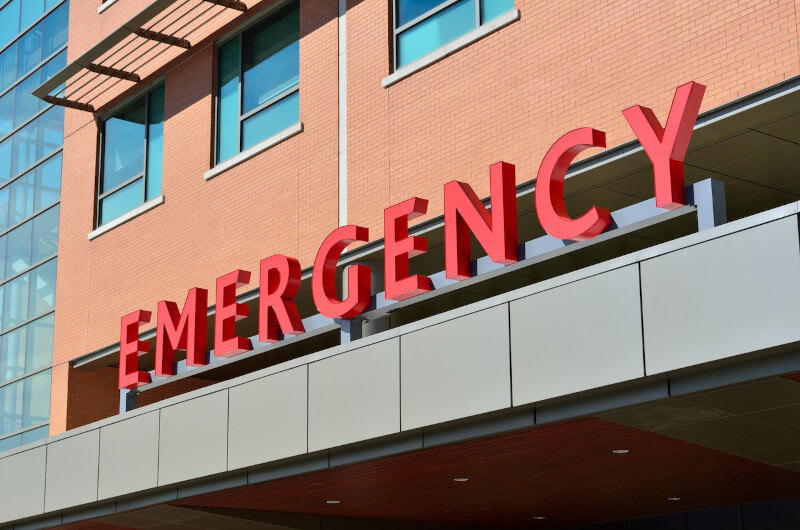When comparing medical aid and healthcare insurance, where can the typical South African obtain the best value for their money while still receiving the necessary level of medical coverage? Many people say that the cost of medical aid coverage is too high and that only a tiny proportion of South Africans who are employed can afford it. According to the data, only 16.1% of people living in South Africa are covered by medical aid.
However, the fee structure is significantly impacted by the reality that medical plans are obligated to offer members with prescribed minimum benefits (PMBs) that include at least 271 medical conditions and 26 chronic illnesses, whereas insurance companies are not mandated to offer PMBs. The price of the cover is quite expensive. But to be more accessible, the business has developed alternatives throughout the years, and customers now have alternative possibilities and means to assess the most cost-effective option for the person or family. In other words, the industry has evolved.
Why Are Rates Set at Such a High Level?

The primary user of medical aid would pay somewhere in the range of R1,500 to R2,000 per month for coverage under even the most fundamental plan. One parent raising a child on their own can anticipate paying a minimum of R2,300 each month. A monthly salary of at least R20,000 is necessary to avoid medical aid taking up more than 10% of the total budget for the household. However, there is a tax incentive that is offered to members, and that benefit is the ability to reclaim medical tax breaks on their tax returns. During the existing tax period, taxpayers are eligible to claim a monthly deduction of R347 for the primary two members of their household, and a monthly deduction of R234 for each subsequent member. For the member to collect their tax credit, they need to file a tax return.
Covering PMBS
The necessity to cover PMBs at their full cost is the most important factor that determines the amount of money contributed to medical schemes. A medical plan is required to provide complete coverage for a predetermined list of 271 life-threatening disorders as well as 26 chronic diseases. Medical aids frequently have no direct control over the costs imposed by healthcare practitioners for treating a PMB ailment; some practitioners charge rates that are as much as 700% more than the rate that is levied by the medical aid. The medical plan would be responsible for making a full payment of these costs.
As stated by the Council for Medical Schemes’ 2020 Industry Report, the expense of providing coverage for these PMBs is R866.02 per average beneficiary each month. This figure was derived from the data collected for the report. It indicates that the monthly payment must be a minimum of R866 for the medical aid to begin protecting its members against medical costs that are not covered by the PMB.
To offer even the most fundamental hospital plan, the program would have to pay for the PMBs (which are now priced at R866) and then add on additional expenditures to cover additional conditions, hospitalization, preventative treatment, and the costs of administration. To address the cost drivers that are behind PMBs, the Council for Medical Schemes is reviewing PMBs to develop a comprehensive set of Preventative and Primary Healthcare packages. These packages will eventually be incorporated into the standard PMB package, which is currently hospital-centric and diagnosis-based.
Hospitalization is another factor that contributes to the overall cost of medical care, particularly when it comes to elective operations. As a consequence of the Covid lockdowns, non-emergency surgeries were put on hold, which led to the majority of medical aids reporting a rise in scheme resources. As a result of the rise in reserves, several plans were able to postpone their yearly cost of living adjustments, and other plans were even capable of reducing their rates. Any rise in hospitalization utilization by members will continue to force up prices because hospitalization is a massive cost for all plans. Increasing the number of time members spend in hospitalization.
Is Purchasing Medical Insurance the Best Option?
Medical insurers don’t need to give complete coverage for PMBs because health insurance is not a medical plan (also known as medical aid). Many new competitors have made their debut in the health insurance industry through the formation of strategic alliances with established life insurance and financial service providers. Because it is an insurance product, risk ratings, holding periods, and restricted coverage can be imposed; this allows it to be purchased at a more reasonable price. However, the tax credit for medical expenses does not apply to premiums paid for health insurance. People need to have a solid understanding of the constraints placed on their health insurance policies.
It is highly unlikely that health insurance will pay for private hospitalization for non-emergency incidents, and the compensation obtained for emergency hospitalizations typically only includes the expenses of the first day or two of treatment. Essentially, health insurance covers the expenses of day-to-day medical care that is received outside of hospitals. A policyholder would have to continue to rely on hospitals run by the state if they did not have a hospital plan.
Because health insurers frequently suggest their primary healthcare solutions as an add-on to a medical program’s basic hospital plan, it is critical to know how much coverage you have on even the most fundamental hospital plan for medical insurance. For example, maternity benefits including newborn scans, lactation consultations, and blood tests might be covered by the policy, whereas chronic medicine and hormone therapy might not be covered at all or might be covered only partially.
The MediSwift Hospital Plan

For instance, the MediSwift hospital plan offered by MedShield is designed for individuals who lead active and healthy lifestyles. Benefits in the form of physiotherapy and biokinetics are included, along with two visits per year to a family practitioner. In addition to providing extensive hospital coverage, the plan includes provisions for people who are usually healthy and have active lives but who may at some point require medical attention for injuries that are not serious enough to necessitate hospitalization.
In addition, the MediSwift plan comes with an annual wellness benefit called Medshield. This benefit covers a variety of preventative care services, such as the Covid vaccine, the flu vaccine, birth control, and several testing for cholesterol, blood pressure, glucose, and body mass index (BMI). The monthly premium for the primary member is R1 908, the premium for an adult dependent is R1 860, and the cost for a youngster is R489. The total monthly premium for a family consisting of two parents and one child is calculated to be R4,257 (R3 329 after applying for the tax credit).
By choosing the Specified Service Provider that is advised by your medical system, you will be able to cut down on the day-to-day costs that you incur. These are suppliers who have reached a consensus with the scheme over the fees they would assess for their services. If this is the case, it is highly unlikely that the specialist will send you a bill for an amount that is greater than the rate covered by your medical program.
Conclusion
Having even a basic medical plan is the better option to choose if you can pay for it. You will be covered for 271 life-threatening disorders, 26 chronic diseases, and a multitude of preventative care advantages, in addition to having access to a private hospital.

